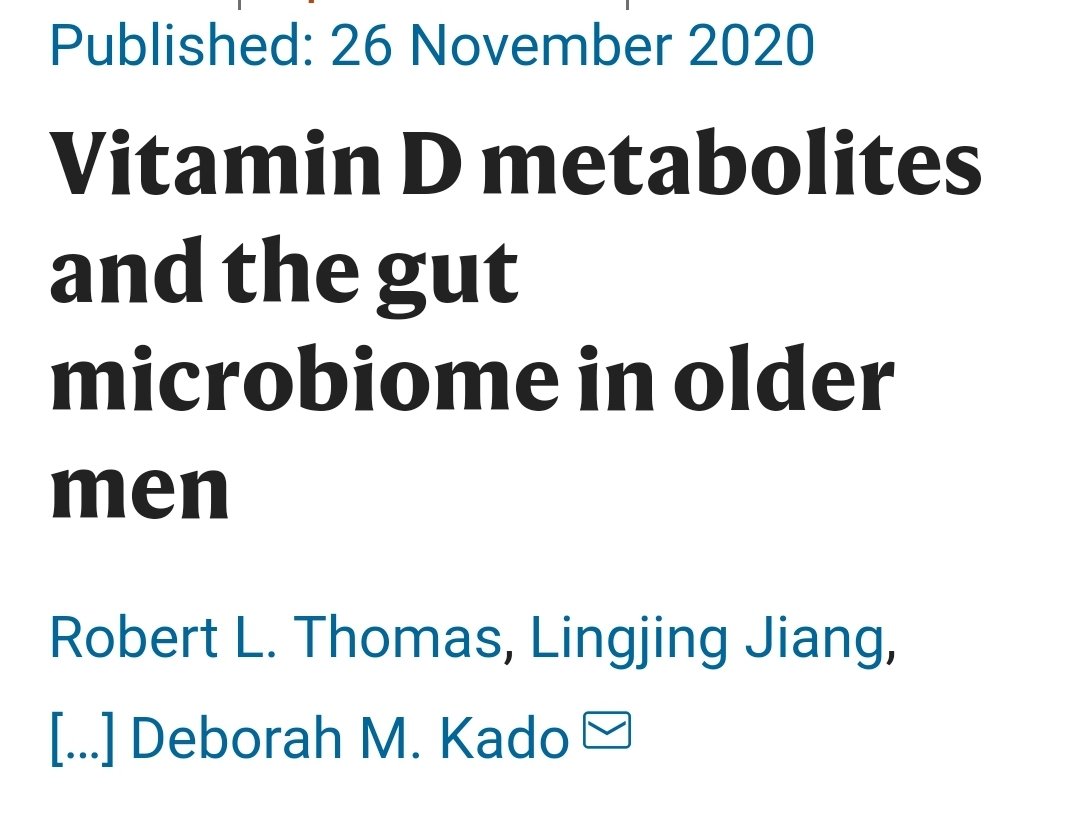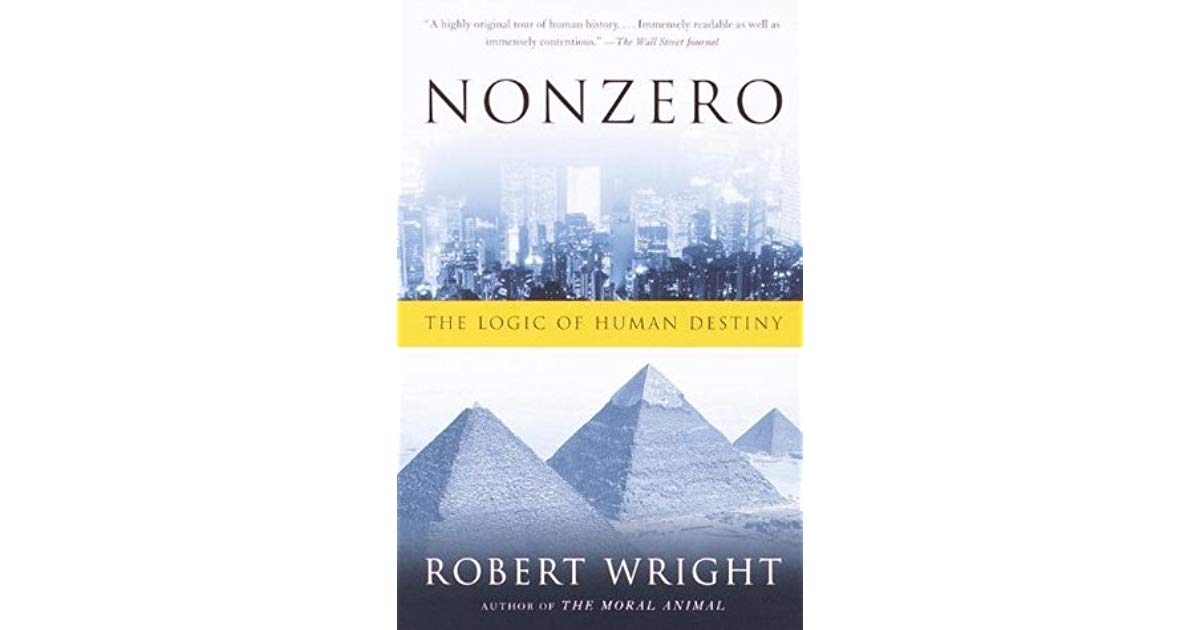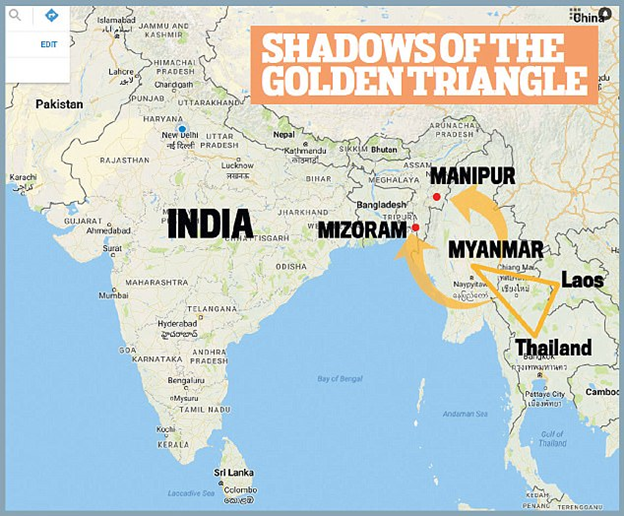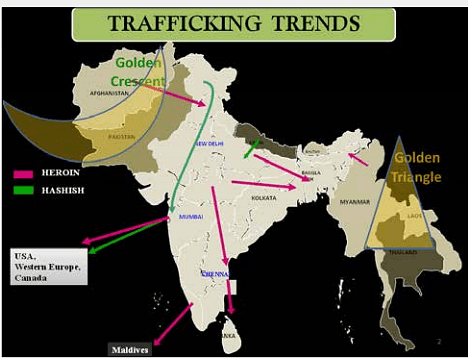https://t.co/QhTuuDsVwL
I have studied the pandemic response of many countries. One of them got a key element right, which resulted in very few deaths: Japan. Their response was to keep people OUT of hospitals. A policy of early home treatment works best, hospitals only for severe cases & NO INTUBATIONS
https://t.co/QhTuuDsVwL
More from Robin Monotti FRSA
I have now re-examined this document:
It clearly does indicate both the risks of bacterial infection & to prescribe broad spectrum antibiotics as part of treatment:
"Collect blood cultures for bacteria that cause pneumonia and sepsis, ideally before antimicrobial therapy. DO NOT
delay antimicrobial therapy"
"6. Management of severe COVID-19: treatment of co-infections
Give empiric antimicrobials [broad spectrum antibiotics] to treat all likely pathogens causing SARI and sepsis as soon as possible, within 1 hour
of initial assessment for patients with sepsis."
"Empiric antibiotic treatment should be based on the clinical diagnosis (community-acquired
pneumonia, health care-associated pneumonia [if infection was acquired in health care setting] or sepsis), local epidemiology &
susceptibility data, and national treatment guidelines"
"When there is ongoing local circulation of seasonal influenza, empiric therapy with a neuraminidase inhibitor [anti-viral influenza drugs] should
be considered for the treatment for patients with influenza or at risk for severe disease."
On the 19th March 2020 the WHO released this guidance intended for healthcare workers (HCWs), healthcare managers and IPC teams at the facility level & at national and district/provincial level:https://t.co/C4aV2BnMPj pic.twitter.com/tCk1EyLskV
— Robin Monotti (@robinmonotti) December 21, 2020
It clearly does indicate both the risks of bacterial infection & to prescribe broad spectrum antibiotics as part of treatment:
"Collect blood cultures for bacteria that cause pneumonia and sepsis, ideally before antimicrobial therapy. DO NOT
delay antimicrobial therapy"
"6. Management of severe COVID-19: treatment of co-infections
Give empiric antimicrobials [broad spectrum antibiotics] to treat all likely pathogens causing SARI and sepsis as soon as possible, within 1 hour
of initial assessment for patients with sepsis."
"Empiric antibiotic treatment should be based on the clinical diagnosis (community-acquired
pneumonia, health care-associated pneumonia [if infection was acquired in health care setting] or sepsis), local epidemiology &
susceptibility data, and national treatment guidelines"
"When there is ongoing local circulation of seasonal influenza, empiric therapy with a neuraminidase inhibitor [anti-viral influenza drugs] should
be considered for the treatment for patients with influenza or at risk for severe disease."
More from Category c19
All you need to know about COVID19
FACTS NOT FEAR
Covid 19 is a disease caused by the SARS-CoV-2 virus. SARS-CoV-2 is one of 7 coronaviruses known to man. 1/n
The pandemic is real. Excess deaths were observed in many countries. Not all countries were affected in the same way due to pre-existing immunity, the health status of the population and demographics (the proportion of elderly in the population) 2/n
https://t.co/65elPq3gp5

COVID 19 presents a high risk for the very few and negligible risk for the many.
The infection fatality rate in different age groups:
<19 y, IFR= 0.003%
20-49 y: IFR= 0.02%
50-69 y: 0.5%
>70y, IFR=
Not everybody is susceptible to the virus. If reinfected, pre-existing immunity from related viruses gives protection from developing the disease or from developing serious symptoms.
4/n
“The evidence that a subset of people has a cross-reactive T cell repertoire through exposure to related coronaviruses is
FACTS NOT FEAR
Covid 19 is a disease caused by the SARS-CoV-2 virus. SARS-CoV-2 is one of 7 coronaviruses known to man. 1/n
The pandemic is real. Excess deaths were observed in many countries. Not all countries were affected in the same way due to pre-existing immunity, the health status of the population and demographics (the proportion of elderly in the population) 2/n
https://t.co/65elPq3gp5

COVID 19 presents a high risk for the very few and negligible risk for the many.
The infection fatality rate in different age groups:
<19 y, IFR= 0.003%
20-49 y: IFR= 0.02%
50-69 y: 0.5%
>70y, IFR=
Not everybody is susceptible to the virus. If reinfected, pre-existing immunity from related viruses gives protection from developing the disease or from developing serious symptoms.
4/n
“The evidence that a subset of people has a cross-reactive T cell repertoire through exposure to related coronaviruses is
1) THERE IS A VERY REAL, CREDIBLE AND SIGNIFICANT DANGER THAT mRNA SPIKE PROTEIN THERAPIES WILL INDUCE PRION OR PRION-LIKE DISEASE
A paper from 2016 shows that prion and prion-like proteins can also spread and propagate from cell to cell through macropinocytosis. It is also
2) noted that the Spike Protein of SARS-CoV-2 can enter cells through macropinocytosis, without the presence of the entire virion. Given the recent Tweet to me by @endocdoc, where he recently saw a patient develop Creutzfeld-Jakob after COVID-19, the extant paper showing CJD
3) CJD after COVID-19 infection and the recent death of the head of Astra-Zeneca research from CJD should be concerning to all. Especially if he gave himself the AZ therapy during Stage 1 or Stage 2 trials. This would give a possible timeframe for onset.
Again, all Spike Protein
4) mRNA and DNA should be paused until long term animal studies can be
5)
https://t.co/PWOgyPoG5d
A paper from 2016 shows that prion and prion-like proteins can also spread and propagate from cell to cell through macropinocytosis. It is also
2) noted that the Spike Protein of SARS-CoV-2 can enter cells through macropinocytosis, without the presence of the entire virion. Given the recent Tweet to me by @endocdoc, where he recently saw a patient develop Creutzfeld-Jakob after COVID-19, the extant paper showing CJD
3) CJD after COVID-19 infection and the recent death of the head of Astra-Zeneca research from CJD should be concerning to all. Especially if he gave himself the AZ therapy during Stage 1 or Stage 2 trials. This would give a possible timeframe for onset.
Again, all Spike Protein
4) mRNA and DNA should be paused until long term animal studies can be
5)
https://t.co/PWOgyPoG5d
A brief tutorial in health education to show you how sound health education models have been used for manipulation instead of creating health awareness during the COVID 19 pandemic. We'll uses masks as an example of a health behavior.
Are you ready to explore? 1/n
The Health Belief Model (HBM) consists of 5 components: perceived threat (lethality + Susceptibility),
perceived benefits,
perceived barriers and
cues to action.
Familiarise yourself with the definition of each concept in this table. 2/n
https://t.co/1tOz1cJFvc
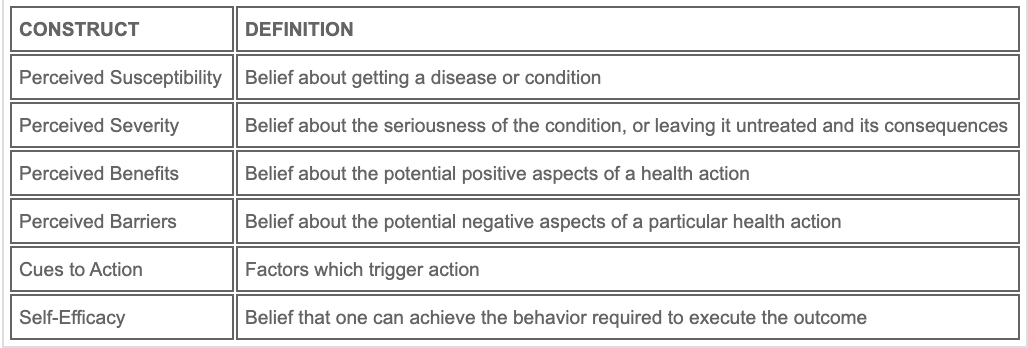
Study this diagram to understand how the components are interrelated. 3/n
https://t.co/iUoaqNkgyP
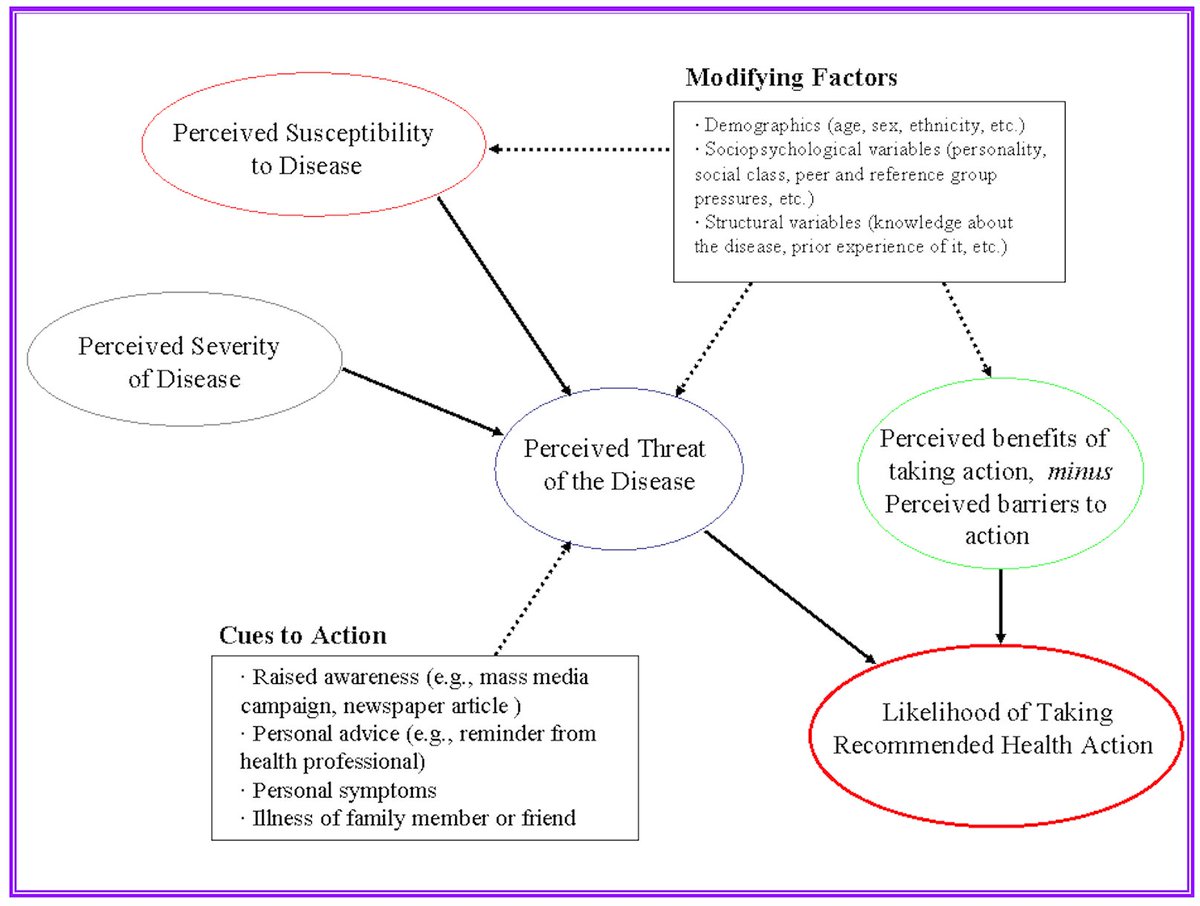
Now let’s apply this to the COVID 19 pandemic.
Review this diagram to see how the HBM applies to the behaviour of mask-wearing.
“perceived susceptibility appeared to be the most significant factor determining compliance” 4/n
https://t.co/xF6uwUx12N

Part I: The HBM
Increase the perceived threat of a disease
1) increase perceived severity: Confusing the general public with CFR & IFR- 2 indicators that are an order of magnitude apart.
People understood wrongly that the fatality rate of C19 is
Are you ready to explore? 1/n
The Health Belief Model (HBM) consists of 5 components: perceived threat (lethality + Susceptibility),
perceived benefits,
perceived barriers and
cues to action.
Familiarise yourself with the definition of each concept in this table. 2/n
https://t.co/1tOz1cJFvc

Study this diagram to understand how the components are interrelated. 3/n
https://t.co/iUoaqNkgyP

Now let’s apply this to the COVID 19 pandemic.
Review this diagram to see how the HBM applies to the behaviour of mask-wearing.
“perceived susceptibility appeared to be the most significant factor determining compliance” 4/n
https://t.co/xF6uwUx12N

Part I: The HBM
Increase the perceived threat of a disease
1) increase perceived severity: Confusing the general public with CFR & IFR- 2 indicators that are an order of magnitude apart.
People understood wrongly that the fatality rate of C19 is
"Globally, about 3.4% of reported #COVID19 cases have died. By comparison, seasonal flu generally kills far fewer than 1% of those infected"-@DrTedros #coronavirus
— World Health Organization (WHO) (@WHO) March 3, 2020
@welt published an article today on the “panic paper”-scandal in Germany.
Title is "Maximum collaboration”, showing @BMI_Bund / Horst Seehofer had a secret paper drafted in the 1st COVID-19 wave that dramatically depicted the threat.
A scandal of gigantic proportions. Thread⬇️

2/: @welt released 2 versions: long version as print, short-edit, online.
This thread focuses on the long version. It's of crucial importance-people around the globe understand this earthshaking scandal. Share.
English: https://t.co/qAbU6D8c0P
German: https://t.co/W2i1FtVrCg
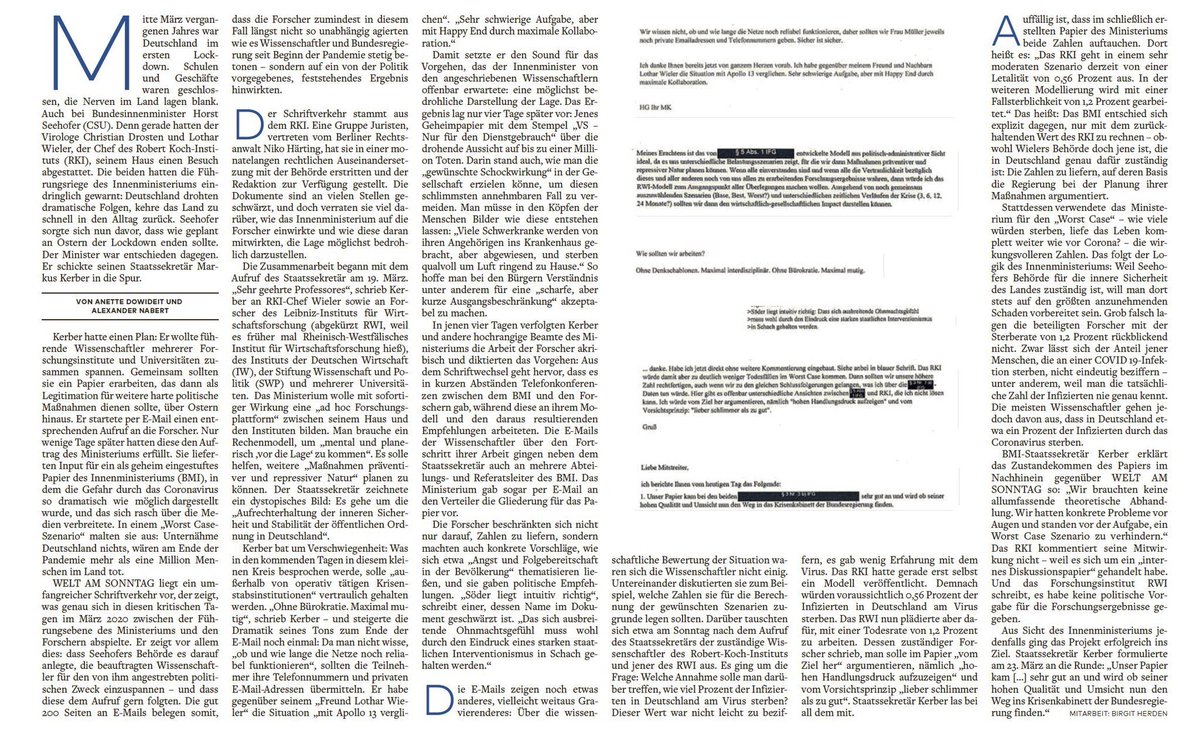
3/: Mid-March 2020: Federal Minister of the Interior-Horst Seehofer (@BMI_Bund, @cducsubt) was on the edge: Christian Drosten (@c_drosten) & Lothar Wieler (@RKI) urgently warned: Germany was threatened w/ dramatic consequences if the country returned to everyday life too quickly.

4/: Horst Seehofer sent his Secretary of State Markus Kerber into the lane. The plan was to bring together leading scientists: they should produce a paper that would then serve as legitimation for further tough political measures, beyond Easter - now known as the “panic paper”.

5/: Markus Kerber launched a corresponding call to researchers via e-mail, 4 days later, the request was fulfilled: A classified paper, which presented the danger posed by the virus as dramatically as possible, and which quickly spread through the media.

Title is "Maximum collaboration”, showing @BMI_Bund / Horst Seehofer had a secret paper drafted in the 1st COVID-19 wave that dramatically depicted the threat.
A scandal of gigantic proportions. Thread⬇️

2/: @welt released 2 versions: long version as print, short-edit, online.
This thread focuses on the long version. It's of crucial importance-people around the globe understand this earthshaking scandal. Share.
English: https://t.co/qAbU6D8c0P
German: https://t.co/W2i1FtVrCg

3/: Mid-March 2020: Federal Minister of the Interior-Horst Seehofer (@BMI_Bund, @cducsubt) was on the edge: Christian Drosten (@c_drosten) & Lothar Wieler (@RKI) urgently warned: Germany was threatened w/ dramatic consequences if the country returned to everyday life too quickly.

4/: Horst Seehofer sent his Secretary of State Markus Kerber into the lane. The plan was to bring together leading scientists: they should produce a paper that would then serve as legitimation for further tough political measures, beyond Easter - now known as the “panic paper”.

5/: Markus Kerber launched a corresponding call to researchers via e-mail, 4 days later, the request was fulfilled: A classified paper, which presented the danger posed by the virus as dramatically as possible, and which quickly spread through the media.

You May Also Like
Krugman is, of course, right about this. BUT, note that universities can do a lot to revitalize declining and rural regions.
See this thing that @lymanstoneky wrote:
And see this thing that I wrote:
And see this book that @JamesFallows wrote:
And see this other thing that I wrote:
One thing I've been noticing about responses to today's column is that many people still don't get how strong the forces behind regional divergence are, and how hard to reverse 1/ https://t.co/Ft2aH1NcQt
— Paul Krugman (@paulkrugman) November 20, 2018
See this thing that @lymanstoneky wrote:
And see this thing that I wrote:
And see this book that @JamesFallows wrote:
And see this other thing that I wrote:

